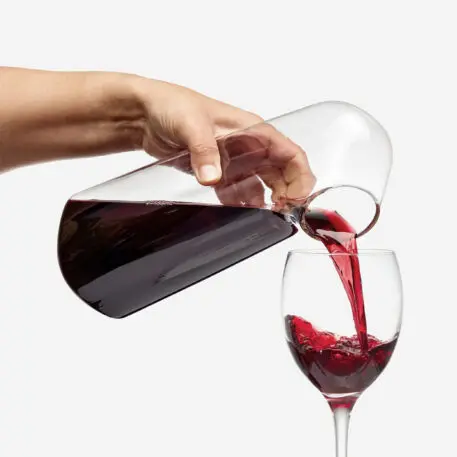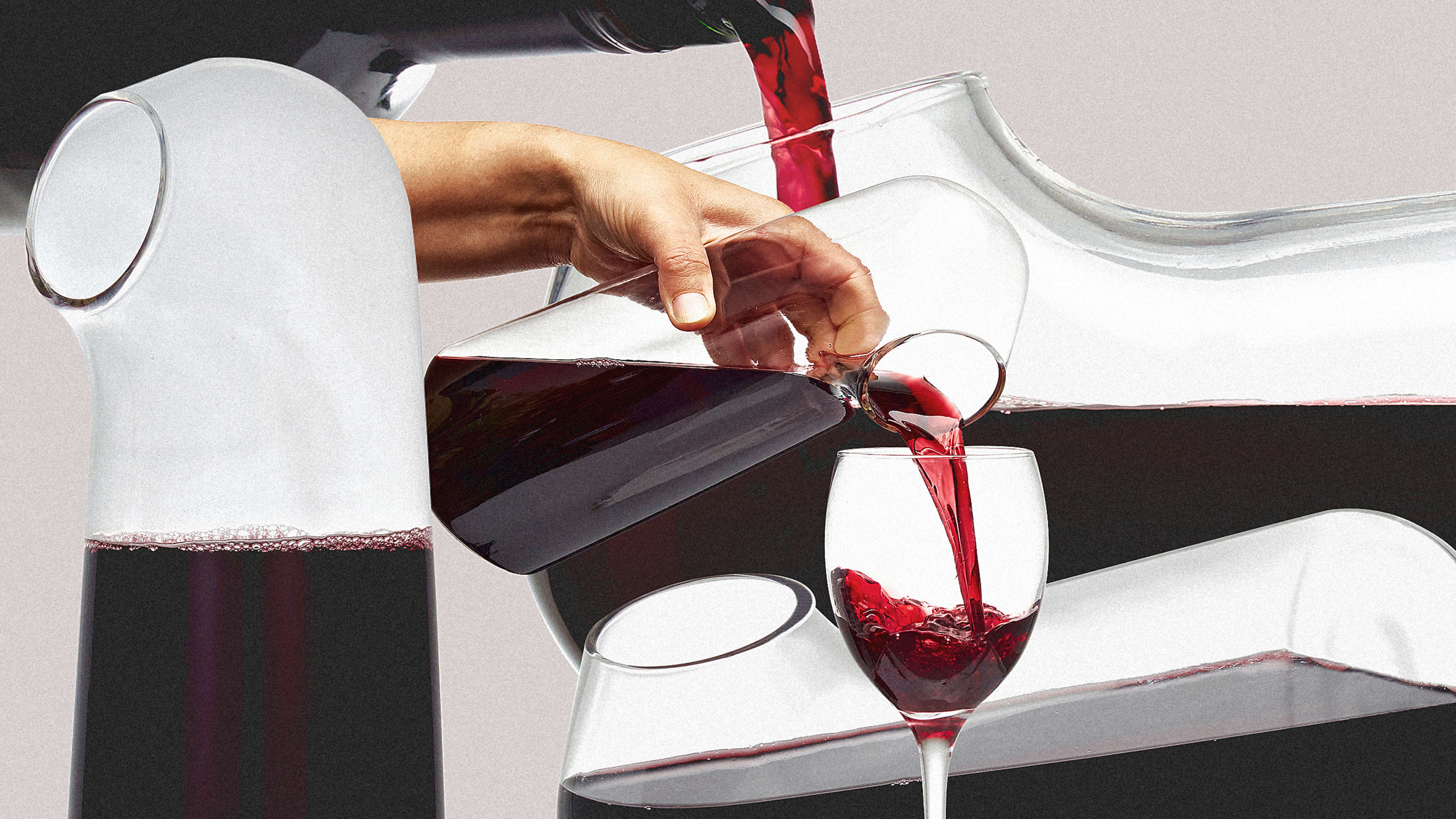Think of a wine decanter and you will likely picture a wide-bottomed jug with a thin neck. This, of course, was designed to allow more oxygen into the vessel to aerate red wine more effectively, which wine connoisseurs say improves the flavor. But that decanter can take up a lot of space on a table, counter, or shelf. Now, an Italian designer has found a way to get the same amount of oxygen in with a much smaller footprint.
The key is in the angle.


[Image: courtesy Pizzolorusso]For Pizzolorusso, however, the decanter 2.0 was hiding in plain sight. Inspiration struck when the designer took a closer look at how wine bottles are stored on their side. “I noticed the surface [inside], it’s so much bigger when it’s horizontal,” he says. “I started to think about a shape that could go with that.”
The final shape (at least in its vertical position) looks a bit like the top half of a periscope, with the decanter’s mouth opening to one side. The vessel can hold a full bottle of wine with plenty of room to spare so the liquid doesn’t spill when you tilt it up. At 3.5-inches wide, it’s slightly bigger than a wine bottle yet slim enough to be held with one hand. It also comes with a long flat side to prevent the vessel from rolling away when it’s horizontal.
It may not be rocket science, but the object is an incredibly smart play on surface area—and an intriguing reinterpretation of the classic design principle, form follows function.
Recognize your brand’s excellence by applying to this year’s Brands That Matter Awards before the early-rate deadline, May 3.
